 by Gary Vey for ViewZone Magazine
In its long history, the Pergatoire River has flooded and eroded the sedimentary land on its shores and has carved its path deep within the arid land. The top layers of the canyon walls are almost 80-million years old and show evidence of a shoreline of some remote ocean that once covered most of central North America. Each layer marks an even older epoch. The large stones that once rested on top of these canyons are rich in manganese. Drenched by periodic rain and snow and baked by temperatures that can exceed 100 degrees, the minerals precipitate on the outside of the large stones, forming a dark - almost black - varnish (manganese oxide) that can be up to one half inch thick. Beneath this hard layer the stone is almost a bright yellow and very soft. As large, house-size chunks of rock crack and break away from the top of the canyons, they tumble down the canyon and rest near the shore of the river. Here they have remained for eons and have provided an ideal blackboard for the early writing of humans.
 Enhanced petroglyphs on a large stone located at N 37-44'95/W 103-28'84. The oldest petroglyphs are pecked, perhaps with a piece of flint and a heavy rock. The dark patina is chipped away, revealing the bright yellow underneath and forming shapes that are highly contrasted and easily seen from a distance. With the passing of thousands of years, the process of mineral precipitation once again brings the magnesium to the surface of these stones, hiding the writing and petroglyphs with yet another layer of dark varnish. The oldest petroglyphs are seen as shapes, pitted lines and curves, instead of the highly contrasted images of their original creation. When the sunlight is at an angle, shadows can illuminate the shapes well enough to trace the shapes and record the petroglyphs. The photographs here were taken in the summer of 2002. The petroglyphs have been enhanced from multiple photographs, taken at different times of the day, and are presented here for review. Many of the petroglyphs were eroded too poorly to be recorded with certainty and were therefore not included in the enhancements. For the translations below, we used the symbols taken from the translation program.
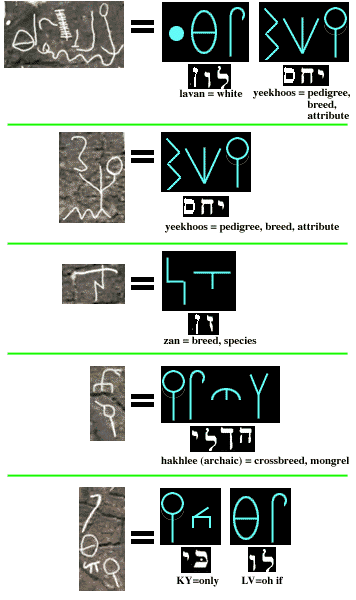  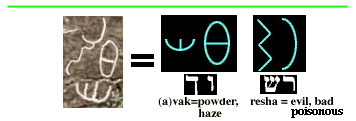 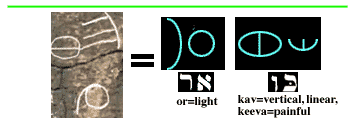  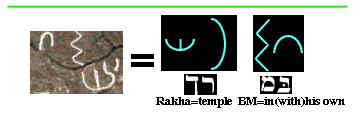   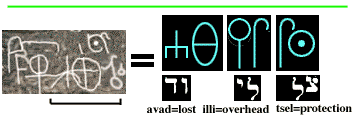 Notice the Lamed+Yod on the far left, arranged as an "arm," protecting "overhead." 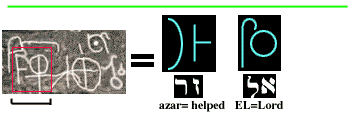  Translation of portions of the petroglyphs. More details will follow. This particular collection is located on private land. It is in the "cursive" style where individual letters are combined and are read from right to left, from top to bottom. Although there is not enough translation completed at this writing to determine the specific message, the multiple references to "breed" and "pedigree," as well as references to fleeing from "poisonous powder" (dust) and "painful light," is quite interesting and suggest either a prophecy, or an event in the history of the authors. We will post more details as they are obtained from careful examination of the multiple photographs taken at this location. We were also able to locate photographs taken in the mid-1990's by William McGlone after he had carefully enhanced the petroglyphs with aluminum powder. ViewZone asks readers to submit their comments and discussion of what this "message" could possibly represent. In this recently discovered video, made in 2002, the wall described above can be seen, untouched. It's a short film and the rock wall is towards the end.
|

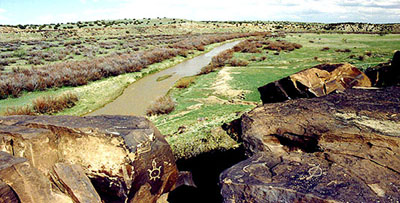 If it were in any other country than America, the region of the Pergatoire River canyons in Colorado would be called a "wadi." The river is sustained by the winter snow in the higher Rocky Mountains and its flow varies dramatically with each season, and from year to year. At times, like the drought we encountered this year (2002), the river was almost dry.
If it were in any other country than America, the region of the Pergatoire River canyons in Colorado would be called a "wadi." The river is sustained by the winter snow in the higher Rocky Mountains and its flow varies dramatically with each season, and from year to year. At times, like the drought we encountered this year (2002), the river was almost dry.